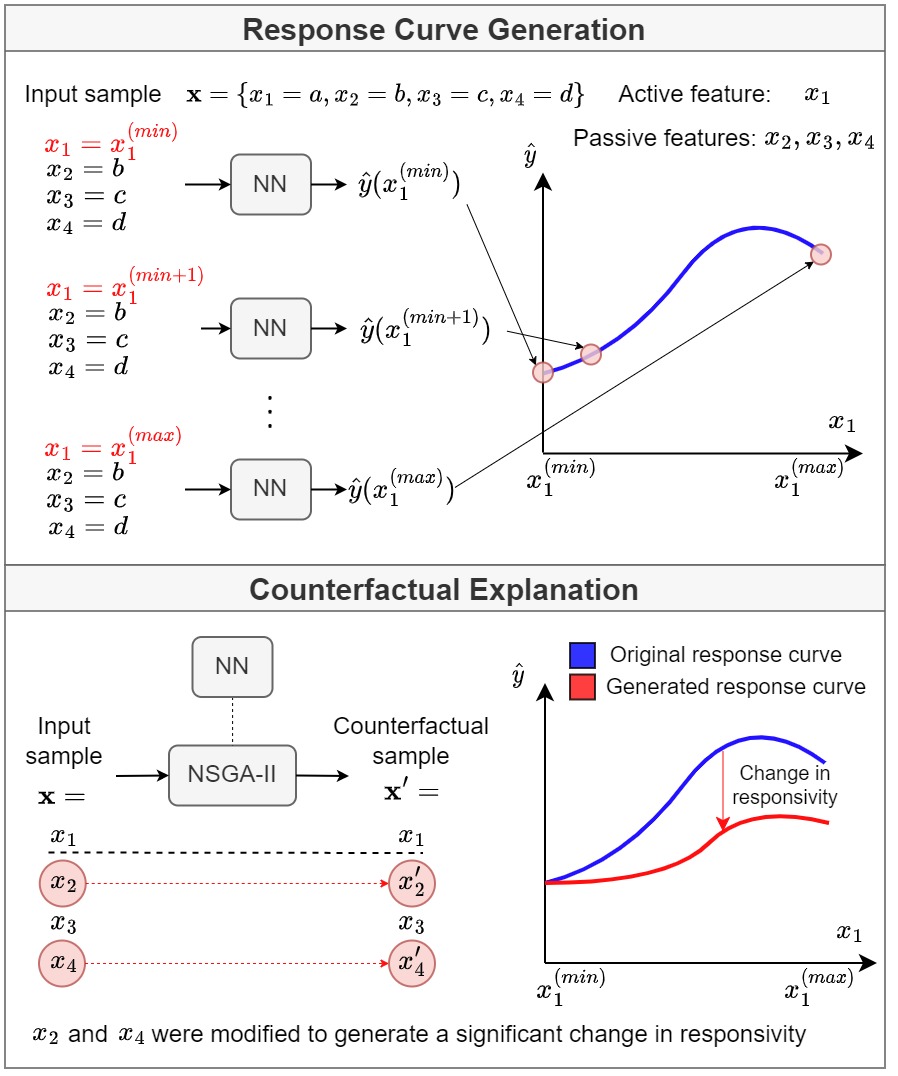Counterfactual Explanations of Neural Network-Generated Response Curves
Response curves exhibit the magnitude of the response of a sensitive system to a varying stimulus. However, response of such systems may be sensitive to multiple stimuli (i.e., input features) that are not necessarily independent. As a consequence, the shape of response curves generated for a selected input feature (referred to as "active feature") might depend on the values of the other input features (referred to as "passive features"). In this work, we consider the case of systems whose response is approximated using regression neural networks. We propose to use counterfactual explanations (CFEs) for the identification of the features with the highest relevance on the shape of response curves generated by neural network black boxes. CFEs are generated by a genetic algorithm-based approach that solves a multi-objective optimization problem. In particular, given a response curve generated for an active feature, a CFE finds the minimum combination of passive features that need to be modified to alter the shape of the response curve. We tested our method on a synthetic dataset with 1-D inputs and two crop yield prediction datasets with 2-D inputs. The relevance ranking of features and feature combinations obtained on the synthetic dataset coincided with the analysis of the equation that was used to generate the problem. Results obtained on the yield prediction datasets revealed that the impact on fertilizer responsivity of passive features depends on the terrain characteristics of each field.
PDF Abstract

